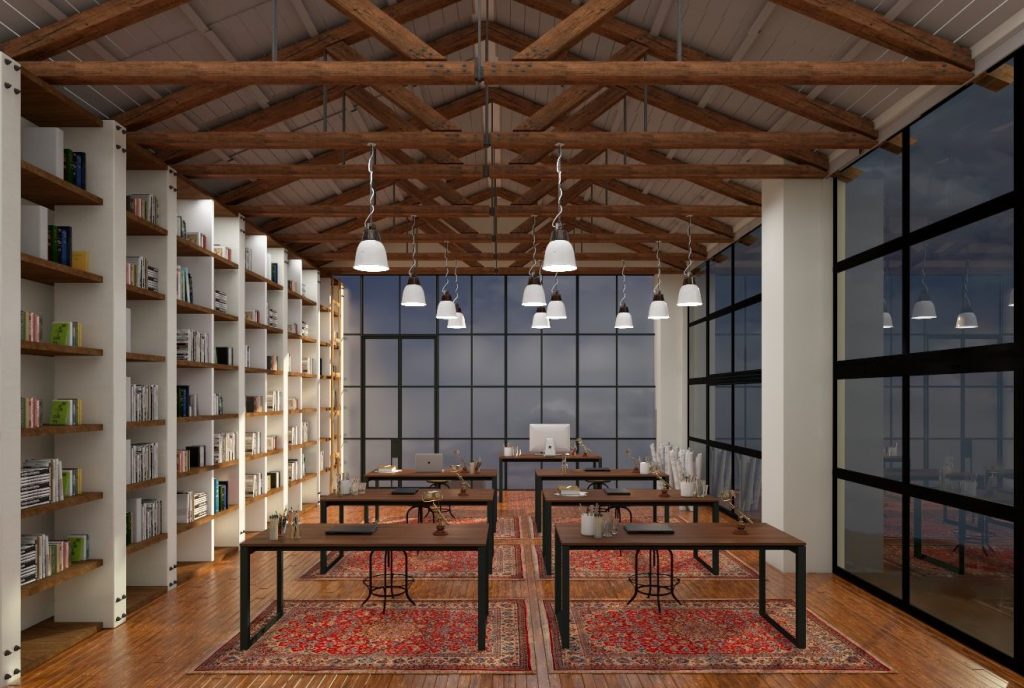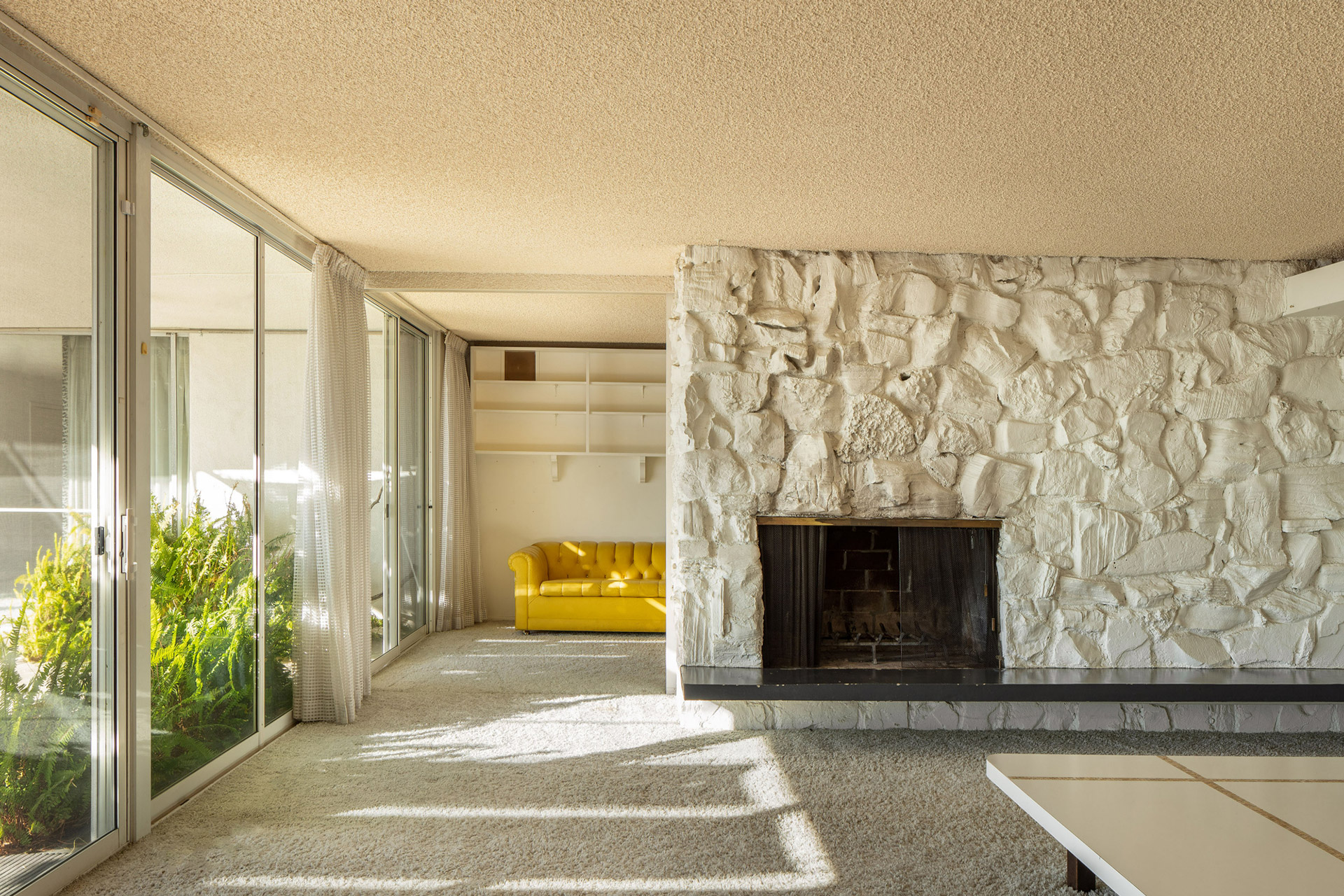Table Of Content

Industrial Style Interior Design is a minimalistic design style a designer adapts to amplify the space. This design style combines all the architectural elements in their natural forms to give an industrial look to the space. For example, using a metal exposed beam in the ceiling and incorporating profile lights will make the space look larger. Industrial Style Interior Design is a raw and simple design approach that takes inspiration from 19th-century old factories. Therefore, it has elements such as exposed brick walls, open ceilings with ducts and pipes, and rough textures. At the heart of industrial interior design style lies a profound appreciation for raw materials and textures.
Focus on the floors
‘You will see industrial materials being mixed with metals such as bronze, copper and brass, and with terrazzo and marble’. ‘Rugged materials and utilitarian objects create a laid-back atmosphere, unpretentious and edgy but with a lot of thought going into every little detail,’ says The Thames Studio’s Anamaria Paraoaru. From gleaming stainless-steel surfaces and shining golden handles to deep black tones and the multicolored tarnish that comes with age and a touch of rust – metal finishes of all types have a home in the industrial space. The finish you go for can really affect the overall mood of the room – as good as new makes for a slick, fresh, modern feel, while a natural patina speaks of a practicality, and the material’s journey through many hands. Those ceiling have to be supported by something – liberate those structural beams (metal, wood, whatever!) for the full this-used-to-be-a-factory feel.
Mix modern and Rustic

Even the sleek, handleless designs so typical of modern industrial design right now have been around since the 1960s. ‘Framing the backsplash was about exploring the idea of blending in and standing out,’ explains kitchen designer Charlie Kingham. ‘The frame draws attention to the material, making it feel extra special, but also helps smooth the transition between the bright metal and classically painted Shaker paneling surrounding it.
Exposed Brick, Copper Pipes, and Edison Bulbs: Industrial Interior Design Is a Vibe

Accent colors are used sparingly, and they can either be solid colors (e.g. blue, green, red) or textures like rust and wood tones. Blossoming in the 1970s, the industrial décor trend came to prominence when it became popular to transform warehouses, factories and mills into living spaces. ‘Equally, using foliage of different heights on industrial sideboards or tables creates a gentle tumbling effect that softens the overall look. Often by design, industrial materials and furniture will have slight imperfections so try embracing this and introduce other organic shapes and textures to create a softer approach to the traditional industrial look’.
What Is Industrial Design? - How to Add Industrial Design in Your Home - House Beautiful
What Is Industrial Design? - How to Add Industrial Design in Your Home.
Posted: Fri, 26 Mar 2021 07:00:00 GMT [source]
Industrial Design's Origins
Another practice is leaving the wiring from these light fixtures exposed across the walls and ceilings. Nothing embodies the essence of industrial interior design quite like exposed brick walls. For the man who values authenticity and raw character, these walls stand as symbols of resilience and unrefined beauty. The industrial design and Scandinavian design styles share a few common elements, including minimal decor, natural materials, and large, open spaces.
A palette restricted to varying shades of a single hue creates a harmonious setting, ideal for the discerning gentleman who values continuity and cohesion. By limiting distractions, a monochromatic scheme lets the rugged textures and raw materials inherent to industrial design take center stage. In this restaurant designed by Very Handsome Studio, guests are greeted by sleek black metal and exposed ducts, which are classic elements of industrial interiors.
Mixed Metals
Plus, plants coupled with the plentiful natural light create a very effective and clean ecosystem in the living space. Raw concrete walls are the canvas of choice for the male aficionado of industrial interior design. Stark, unapologetic, and dripping with character, these walls echo the brutalist charm of warehouses and lofts.
From gleaming gold to rusty wrought iron, textures are a significant factor in this style. Transporting you straight to the bustling lanes of New York, the arched casement window serves as the epitome of industrial chic. Imagine, the allure of the subway window, combined with an urban look, bringing forth a design that resonates with character. When integrated into your living space, they don’t just serve as storage; they become conversation starters, bearing the essence of history and artistry.
Vintage Metal Light Fixtures
When it comes to counter height bar stools, consider the color and style that will complement your counters (and the rest of the dining room) the most. For example, if you have bone-white counters, white bar stools with black metal frames are a good choice. When it comes to decorating ideas and furnishings, an industrial interior should be practical and uncomplicated. Clean lines, minimalist forms and stark contrasts are a must, but this simplistic approach does not mean you have to compromise on comfort or warmth.
The industrial interior design style draws inspiration from old warehouses, factories, and industrial spaces, transforming them into inviting and functional living or working environments. At its core, this design aesthetic cherishes raw and unrefined elements such as exposed brick walls, concrete floors, steel beams, and industrial lighting fixtures. To infuse industrial design into your home, start by incorporating elements like exposed brick or concrete walls, metal accents, and reclaimed wood furniture. Opt for vintage or distressed furniture, industrial-style lighting fixtures, and neutral colors like grays, browns, and blacks.
Hence, the Scandinavian interior design style revolves around clean, simple yet highly functional themes and elements. ‘Designers have found ways of softening the stark and bare appearance of industrial interiors by moving towards a warmer and elegant look to enhance the qualities of the space’. Black metal framed multi-pane windows pair well with exposed brick and concrete for a chic, urban look.
However, as a designer, you can convince them to take a leap of faith if you are armed with good concepts and a realistic image of how their home will look on completion. But more often than not, hiring a visualization expert or learning 3D modeling and rendering can be an exhaustive and expensive task. It’s a bold move, but for the man who appreciates subtlety in power, this approach weaves together a tapestry of impeccable style and unmatched elegance. If you’re interested in creating an industrial home or space, consider these projects from Del Piero and Truong and Dang.
One of the defining features of industrial style interiors is the deliberate exposure of structural elements. Beams, ductwork, and pipes are left visible and unadorned to serve as functional and architectural elements. These exposed structures not only add an industrial edge to the space but also highlight the authenticity and history of the building. When it comes to the raw energy of industrial interior design, the power of bold black details cannot be overlooked.
‘Industrial design is being increasingly used in residential settings, now more commonly mixed with softer materials and more refined elements to make it suited to a comfortable home’ agrees DesignSpace London’s Richard Atkins. ‘It’s also a style that can be affordable – imagine yourself as one of these original creative inhabitants with a shoestring budget and let the restrictions set the tone’. Metal is a material that can be used to cover the beams or modify the ceiling. Moreover, there can be metal hangings added to the place in terms of partitions or artifacts. Also, the metal planters can be used as partitions or transition elements in the space.
An industrial-style space looks as if it is unfinished, and that kind of ‘ruggedness’ provides a casual, relaxing environment to live in. ‘Since rising to popularity, industrial style has evolved to become a subtler trend that combines the practical functionality of industrial design with a mix of other styles,’ adds Jane Rockett of Rockett St George. ‘Practicality and creativity can be brought together to create industrial interiors,’ affirms The Thames Studio’s Anamaria Paraoaru. ‘Elements of weathered wood, exposed metal, stripped floors, distressed leather and linen, and caged metal light fittings with bare bulbs will create the relaxed feel of the industrial style. Include metal elements like shelves, bar stools or coffee tables which add to the industrial feel.

No comments:
Post a Comment